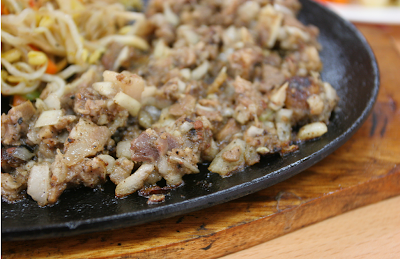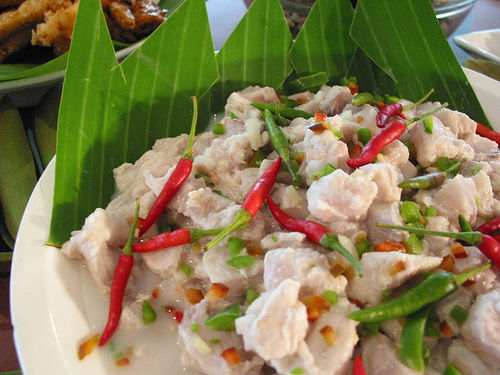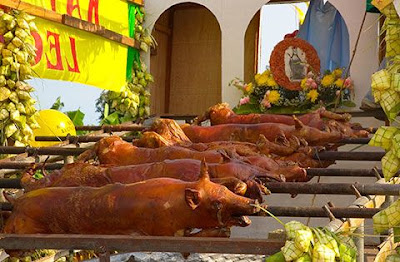If there's one dish that Filipinos may call their own, probably it's the Sinigang.
Sinigang is a kind of stew dish known for its sour taste. It's often attach to the fruit of tamarind or sampalok. Every region has its own ingredient to use depending on the abundance of the fruit. Some use guava, kalamansi (a kind of citrus fruit), santol(Sandoricum koetjape), green mango, camias ginger lily, and others that has the sour characteristic. Due to seasonal availability of these fruits, Filipino has created the powdered soup base or bouillon cubes in tamarind base.
Sinigang can be apply in most kind of meats. The most prominent ingredient maybe the pork. I have also tried the chicken and it's fine, it more often called it as Sinampalukang Manok. Beef is rarely use. Fish like tilapia and milk fish are also common in seafoods. Likewise with shrimp which is the best among the sinigang main ingredient.
Sinigang cannot be called authentic in the absence of vegetables. In preparing sinigang, you should have tomatoes, onions, gingers (used to relinquish the fishy smell), okra, taro corms (gabi), daikon (labanos), water spinach (kangkong), string beans(sitaw) and eggplant(talong). Most Filipinos like sinigang with a kick, so they drop a green finger pepper to add some spice to the dish.
So here's the recipe of a Sinigang na Baboy:
Ingredients:- 1/2 Kilo of Pork meat
- 2 pcs of pelled garlic
- 1 pc of chopped onion
- 3 pcs of sliced tomatoes
- 2 tablespoon of patis (fish sauce)
- Tamarind (you can use the real fruit or the powder base)
- 2 pcs of sliced taro corms,
- 6-8 strand of string beans (cut into 2 inches long)
- 1 pc of fine slice of daikon
- a bundle of water spinach
- 1 - 2 pcs of green finger pepper
How to Prepare and Cook:- Boil the pork meat on a 4 bowls of water in a casserole. Cook until it becomes tender. Separate the meat but don't throw the soup.
- When the meat is tender, saute the garlic, onion and tomatoes in a pan.
- Put the fish sauce to taste.
- Simmer the tender meat and taro.
- Cover and let it boil for about 10 minutes.
- Transfer the soup from the casserole.
- Boil it again for 5 minutes together with the tamarind.
- Add the daikon and green finger pepper.
- After 5 minutes, you can put the water spinach and cover it again.
- Now, you serve the Sinigang na Baboy and enjoy the sour taste.
Here's an another way of preparing your Sinigang. A step-by-step guide.
Photo from Hubpages.com










 3:21 AM
3:21 AM
 Unknown
Unknown





















